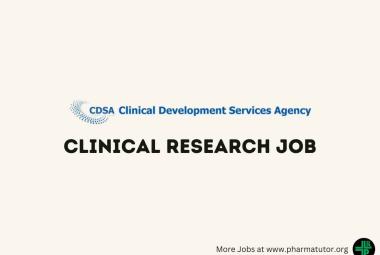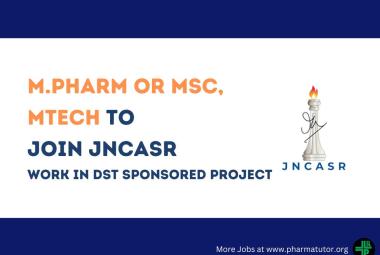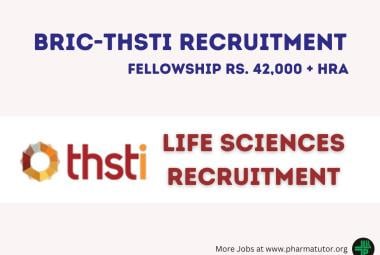About Authors:
Geetanjali Sengar*, Pranab Tripathy
Drug Regulatory Affairs Dept.
Belco Pharma, 515, Modern Industrial Estate,
Bahadurgarh-124507(Haryana), India.
*geetanjali.sengar@gmail.com, geetanjalisengar87@gmail.com
ABSTRACT:
As the pharmaceutical industries throughout the world are moving ahead towards becoming more and more competitive, regulatory agencies are being established in various countries across the globe. Regulatory agencies and organizations play a vital role to meet the requirements of legal procedures related to drug development process in a country.
In the present scenario, pharmaceuticals are considered as the most highly regulated industries worldwide. The regulatory body ensures compliances in various legal and regulatory aspects of a drug. Every country has its own regulatory authority, which is responsible to enforce the rules and regulations and issue the guidelines to regulate drug development process,licensing, registration, manufacturing, marketing and labeling of pharmaceutical products. USFDA(USA), MHRA(UK), TGA(Australia), CDSCO(India), HEALTH CANADA(CANADA), MCC(South Africa),ANVISA (Brazil) , EMEA (European Union), SFDA (China),NAFDAC(Nigeria), MEDSAFE(Newzeland), MHLW(Japan), MCAZ(Zimbabwe), SWISSMEDIC(Switzerland), KFDA(Korea), MoH (Sri Lanka) are the few regulatory agencies and organizations established in respective countries.
World Health Organization (WHO), Pan American Health Organization (PAHO), World Trade Organization (WTO), International Conference on Harmonization (ICH), World Intellectual Property Organization (WIPO) are some of the international regulatory agencies and organizations which also play essential role inall aspects of pharmaceutical regulations related to drug product registration, manufacturing, distribution, price control, marketing, research and development, and intellectual property protection.
The major challenges of these regulatory agencies and organizations around the worldare to ensure the safety, quality and efficacy of medicines and medical devices, harmonization of legal procedures related to drug development, monitoring and ensuring compliance with statutory obligations.They also play a vital role to ensure and increase regulatory implementation in non-regulated parts of the world for safety of people residing there. The present study describes a brief review of various regulatory bodies of major developed and developing countries and the scope and challenges of such regulatory organizations in drug development and delivery of safe and effective healthcare products to individuals around the world.
Reference Id: PHARMATUTOR-ART-1316
Introduction
As the pharmaceutical industries throughout the world are moving ahead towards becoming more and more competitive, regulatory agencies are being established in various countries across the globe.Regulatory authority and organizations are responsible in effective drug regulation required to ensure the safety, efficacy and quality of drugs, as well as the accuracy and appropriateness of the drug information available to the public. Regulatory bodies provide strategic, tactical and operational direction and support for working within regulations to expedite the development and delivery of safe and effective healthcare products to individuals around the world.
Objective
The present study describes a brief review of various regulatory bodies of major developed and developing countries around the world and the scope and challenges of such pharmaceutical regulatory organizations in delivery of safe and effective healthcare products.
Drug Development Process and Regulatory Role
New drugs begin in the laboratory with scientists, including chemists and pharmacologists, who identify cellular and genetic factors that play a role in specific diseases. They search for chemical and biological substances that target these biological markers and are likely to have drug-like effects. Out of every 5,000 new compounds identified during the discovery process, approximately five are considered safe for testing in human volunteers after preclinical evaluations. After three to six years of further clinical testing in patients, only one of these compounds on average is ultimately approved as a marketed drug for treatment.
Newdrug registration process in INDIA
The drug approval process varies from one country to another. In some countries, only a single body regulates the drugs and responsible for all regulatory tasks such as approval of new drugs, providing license for manufacturing and inspection of manufacturing plants e.g. in USA, FDA performs all the functions. However in some counties all tasks are not performed by a single regulatory authority, such as in India, this responsibility is divided on Centralised and State authorities.Worldwide, federal, state, and local regulatory agencies work to assure licensing, registration, development, manufacturing, marketing and labeling of pharmaceutical products so that they are in compliance with all applicable rules. Major strategic, tactical and operational directions executed by regulatory bodies in various phases of drug development process in US and EU are
Clinical Investigation
US: IND – Investigational New Drug (Application)
EU: CTA / CTX – Clinical Trial Authorization/Clinical Trials Exemption
Marketing Approval
US: NDA – New Drug Application ,
ANDA - Abbreviated New Drug Application,
BLA – Biologic License Application
EU: MAA – Marketing Authorization Application
CTD–Common Technical Document, Common format for marketing authorization (registration)
Labelling
US: Primary and Secondary Container, Package Insert (PI), Patient Package Insert (PPI), Structured Product Labeling (SPL)
EU: Summary of Product Characteristics (SPC), European Public Assessment Report (EPAR)
Major Regulatory Agencies World Wide
Every country has its own regulatory authority, which is responsible to enforce the rules and regulations and issue guidelines for drug development,licensing, registration, manufacturing, marketing and labeling of pharmaceutical products.
|
Country |
Name of Regulatory Authority |
|
USA |
Food and Drug Administration (FDA) |
|
UK |
Medicines and Healthcare Products Regulatory Agency (MHRA) |
|
Australia |
Therapeutic Goods Administration (TGA) |
|
India |
Central Drug Standard Control Organization (CDSCO) |
|
Canada |
Health Canada |
|
Europe |
European Medicines Agency (EMEA) |
|
Denmark |
Danish Medicines Agency |
|
Costa Rica |
Ministry of Health |
|
New Zealand |
Medsafe - Medicines and Medical Devices Safety Authority |
|
Sweden |
Medical Products Agency (MPA) |
|
Netherlands |
Medicines Evaluation Board |
|
Ireland |
Irish Medicines Board |
|
Italy |
Italian Pharmaceutical Agency |
|
Nigeria |
National Agency for Food and Drug Administration and Control (NAFDAC) |
|
Ukraine |
Ministry of Health |
|
Singapore |
Centre for Pharmaceutical Administration Health Sciences Authority |
|
Hong Kong |
Department of Health: Pharmaceutical Services |
|
Paraguay |
Ministry of Health |
|
Sweden |
Medical Products Agency (MPA) |
|
Thailand |
Ministry of Public Health |
|
China |
State Food and Drug Administration |
|
Germany |
Federal Institute for Drugs and Medical Devices |
|
Malaysia |
National Pharmaceutical Control Bureau,Ministry of Health |
|
Pakistan |
Drugs Control Organization, Ministry of Health |
|
South Africa |
Medicines Control Council |
|
Sri Lanka |
SPC,Ministry of Health |
|
Switzerland |
Swissmedic , Swiss Agency for Therapeutic Products |
|
Uganda |
Uganda National Council for Science and Technology (UNCST) |
Brazil |
Agencia Nacional de Vigiloncia Sanitaria (ANVISA ) |
Japan |
Ministry of Health, Labour & Welfare(MHLW) |
|
INTERNATIONAL ORGANIZATIONS |
|
|
World Health Organization (WHO) |
|
|
Pan American Health Organization (PAHO) |
|
|
World Trade Organization (WTO) |
|
|
International Conference on Harmonization (ICH) |
|
|
World Intellectual Property Organization (WIPO) |
|
Common Scope of Such Organizations
Regulatory authorities act as a guardian that ensures the safety, efficacy and quality of drugs available to the public, to identify the strengths and weaknesses of drug regulation and to propose strategies to improve drug regulation. They also play a vital role to ensure and increase regulatory implementation in non-regulated parts of the world for safety of people residing there. The international regulatory organizations play essential role inall aspects of pharmaceutical regulations related to drug product registration, manufacturing, distribution, price control, marketing, research and development, and intellectual property protection.
Challenges
The major challenges of these regulatory bodies are
* To promote public health and protect the public from harmful and dubious drugs,
* To establish proper legalization covering all products with a medicinal claim and all relevant pharmaceutical activities, whether carried out by the public or the private sector.
* To increase worldwide regulatory growth to ensure safety of people.
Conclusion
Regulatory agencies and organizations around the worldneed to ensure the safety, quality and efficacy of medicines and medical devices, harmonization of legal procedures related to drug development, monitoringand ensuring compliance with statutory obligations. However the need of the hour is
* More centralized procedures in drug regulation
* Harmonization of regulatory norms
* Strengthening the regulatory authorities
Bibliography
1. Rohilla, Dhulichand; Dureja, HarishDr., New Drug Approval Process: Regulatory View, Pharmainfo.net, 2010.(assessed on Sept 5th 2011).
2. Governement and regulatory bodies around the world, pharmweb.net/pwmirror/pwk/pharmwebk.html.(assessed on Sept 8th 2010).
3. Meadows, M. The FDA’s Drug Review Process: Ensuring Drugs are Safe and Effective (2002). fda.gov/fdac/features/2002/402_drug.html (assessed on Sept. 10th 2011)
NOW YOU CAN ALSO PUBLISH YOUR ARTICLE ONLINE.
SUBMIT YOUR ARTICLE/PROJECT AT articles@pharmatutor.org
Subscribe to PharmaTutor Alerts by Email
FIND OUT MORE ARTICLES AT OUR DATABASE










.png)


